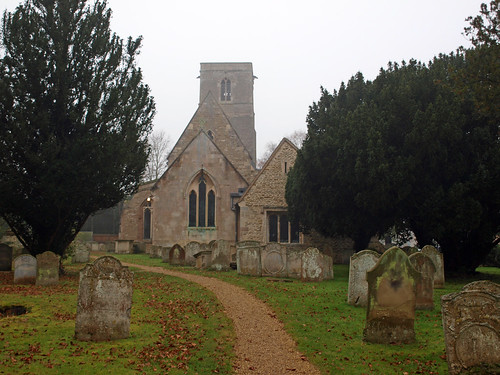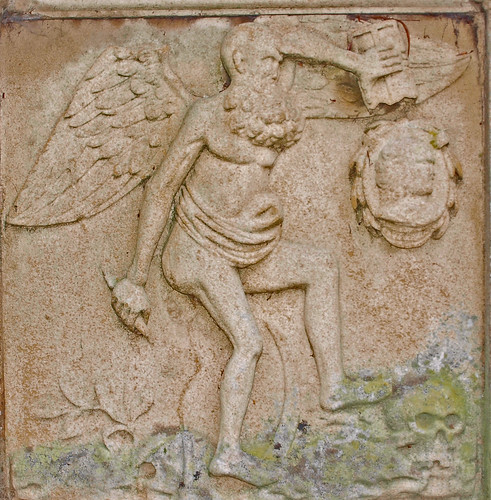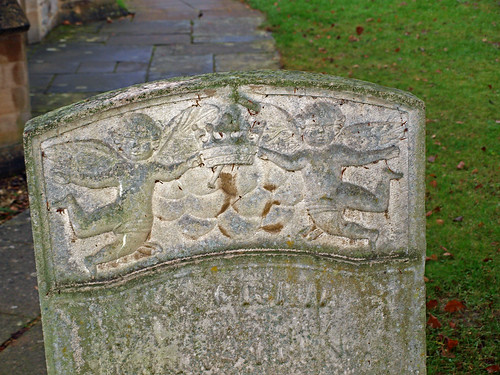ST MARY. Tall Perp W tower. The arch to the nave is nicely interpreted as a short tunnel-vault between two pairs of responds whose capitals are castellated. The chancel is of 1808, but in all its details of 1857. It was then also that most of the other external features received their present appearance. Inside it is different. Both the three-bay arcades are of the early C13, N a little before S; for N has single-step arches, S double-chamfered ones. But both are still round. The piers are round on the S, octagonal on the N side. The W arches however are later, in order to connect with the tower, but it should be noted that the SW respond has nailhead, i.e. cannot be later than c.1300. - PLATE. Cup 1626-7; Paten on foot 1630-1; Cup 1810-11; Paten on foot 1822-3.
STILTON. It is known all over the world for something it has never made. Its fame is stolen or strayed. An important place when the coaches came this way along the Great North Road, it has a 17th century inn with grey stone walls, a stone roof, and a copper sign. Here it was that the farmers of Leicestershire brought their cheese to be sent by coach to London, known as Stilton Cheese, and so it is that Stilton, which makes no cheese, runs away with the fame due to two other counties.
It has had its church 700 years, its arcades having been here all the time. The 15th century tower looks out to the edge of the Fens, and in its belfry rings a bell stamped with a picture of the Madonna and Child 500 years ago. There is a brass portrait of Richard Curthoyse in a mantle and his wife in a tall hat, delightful Elizabethans, and with them are their sons, one in a mantle and one in a cloak. The nave, with aisles only about six feet wide, has a fragment of a coffin lid with a 12th century cross, a 15th century font, a porch built when the font was new, and a finely panelled oak chest with floral ornament. One of its rectors preached here for nearly 50 years.
It has had its church 700 years, its arcades having been here all the time. The 15th century tower looks out to the edge of the Fens, and in its belfry rings a bell stamped with a picture of the Madonna and Child 500 years ago. There is a brass portrait of Richard Curthoyse in a mantle and his wife in a tall hat, delightful Elizabethans, and with them are their sons, one in a mantle and one in a cloak. The nave, with aisles only about six feet wide, has a fragment of a coffin lid with a 12th century cross, a 15th century font, a porch built when the font was new, and a finely panelled oak chest with floral ornament. One of its rectors preached here for nearly 50 years.



No comments:
Post a Comment